Posted on April 30th, 2018 by Mary Lord
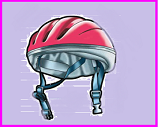 Students in grades 9 and 10 are introduced to the biomechanical characteristics of helmets and challenged to incorporate them into helmet designs. They come to understand the role of engineering associated with safety products – in this case protecting the brain and neck of a bicyclist in the event of a crash, with the design dependent on the user’s needs and specifications.
Students in grades 9 and 10 are introduced to the biomechanical characteristics of helmets and challenged to incorporate them into helmet designs. They come to understand the role of engineering associated with safety products – in this case protecting the brain and neck of a bicyclist in the event of a crash, with the design dependent on the user’s needs and specifications.
Read More
Filed under: Class Activities, Grades 9-12, Lesson Plans | Comments Off on Build a Bike Helmet
Tags: bicycle, bicycle helmet, Class Activities, EcoHelmet, Engineering Design Process, force and motion, Grades 9-12, Lesson Plan, Materials Engineering, NHTSA, Physics, Safety engineering, Sports, video
Posted on April 20th, 2018 by Mary Lord
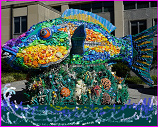 Clean a beach, create art, or help monitor marine debris as a citizen scientist. Check out these lesson plans and other resources for celebrating World Oceans Day June 8.
Clean a beach, create art, or help monitor marine debris as a citizen scientist. Check out these lesson plans and other resources for celebrating World Oceans Day June 8.
Read More
Filed under: For Teachers, Lesson Plans, Special Features, Web Resources | Comments Off on Tackle Plastics for World Oceans Day
Tags: Citizen Science, Competitions for Students, Environmental Engineering, Internet Resources, marine debris, marine debris monitoring and assessment project, Marine Debris Program art contest, NOAA, ocean plastic, Teacher Resources, University of Georgia college of engineering, washedaway.org, Web Resources, world oceans day
Posted on April 18th, 2018 by Mary Lord
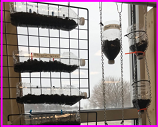 Students in grades 6 to 8 explore food production problems related to population growth and then engineer a model vertical farm as a potential solution in a fictional community, Greentown, culminating with a presentation to the imaginary city’s “legislators.”
Students in grades 6 to 8 explore food production problems related to population growth and then engineer a model vertical farm as a potential solution in a fictional community, Greentown, culminating with a presentation to the imaginary city’s “legislators.”
Read More
Filed under: Class Activities, Grades 6-8, K-12 Outreach Programs, Lesson Plans, Web Resources | Comments Off on Engineer a Vertical Farm
Tags: agriculture, Class Activities, crops, EiE, Engineering Design Process, engineering grand challenges, Engineering is Elementary, Engineering is Everywhere, Environmental Engineering, Environmental science, food supply, Grades 6-8, greenhouse, plant science, school gardens, STEM education, vertical farming, Web Resources
Posted on April 6th, 2018 by Mary Lord
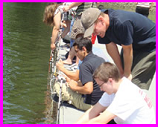 Sensors are in everything from smart phones to corn fields. They also can be a powerful and engaging tool to teach STEM. SENSE IT, a free, research-based curriculum, involves students in hands-on learning about their local environment by constructing, deploying, and interpreting data from a network of water-quality sensors.
Sensors are in everything from smart phones to corn fields. They also can be a powerful and engaging tool to teach STEM. SENSE IT, a free, research-based curriculum, involves students in hands-on learning about their local environment by constructing, deploying, and interpreting data from a network of water-quality sensors.
Read More
Filed under: Grades 6-8, Grades 9-12, K-12 Outreach Programs, Lesson Plans, Web Resources | Comments Off on Sense It!
Tags: circuits, Curriculum, data analysis, Environmental Engineering, Environmental science, Grades 6-8, Grades 9-12, integrated STEM, Internet Resources, iSTEM, Lesson Plan, Liesl Hotaling, SENSE IT, sensors, Teacher Resources, water quality, Web Resources
Posted on April 6th, 2018 by Mary Lord
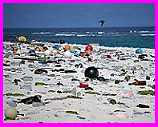 Students learn about the Great Pacific garbage patch, research the extent and impact of plastics pollution on oceans, and present that information as a short, eye-catching newsletter suitable to hand out to fast-food restaurant customers.
Students learn about the Great Pacific garbage patch, research the extent and impact of plastics pollution on oceans, and present that information as a short, eye-catching newsletter suitable to hand out to fast-food restaurant customers.
Read More
Filed under: Class Activities, Grades 6-8, Lesson Plans | Comments Off on Ahoy! Plastic in the Ocean
Tags: Class Activities, Common Core State Standards, data analysis, ecosystem, Environmental Engineering, environmental stewardship, GIS, Grades 6-8, graphic design, great ocean garbage dump, Lesson Plan, literacy, Mapping, Marine Science, Pollution, Research, STEAM, Videos, water cycle, writing
Posted on March 12th, 2018 by Mary Lord
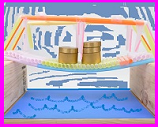 Working in pairs, students in grades 6 to 8 follow the engineering design process to create the strongest truss bridge using a fixed amount of plastic drinking straws and tape. Let the competition begin!
Working in pairs, students in grades 6 to 8 follow the engineering design process to create the strongest truss bridge using a fixed amount of plastic drinking straws and tape. Let the competition begin!
Read More
Filed under: Class Activities, Grades 6-8, Lesson Plans | Comments Off on Straw Bridges
Tags: bridge, Bridge Design, Class Activities, Engineering Design Process, forces, Grades 6-8, Lesson Plan, truss
Posted on January 5th, 2018 by Mary Lord
 High school students design and build wind chimes using their knowledge of physics and sound waves, and under such constraints as weight, cost, and the number of musical notes their chimes must generate. They make mathematical computations to determine the pipe lengths. Links to similar activities for younger students included in activity scaling section.
High school students design and build wind chimes using their knowledge of physics and sound waves, and under such constraints as weight, cost, and the number of musical notes their chimes must generate. They make mathematical computations to determine the pipe lengths. Links to similar activities for younger students included in activity scaling section.
Read More
Filed under: Class Activities, Grades 9-12, Lesson Plans | Comments Off on Wind Chimes
Tags: career technical education, chimes, Class Activities, Engineering Design Process, frequency, Grades 9-12, Lesson Plan, Mathematics, Physics, sound, STEAM, wave length, wind chimes
Posted on December 13th, 2017 by Mary Lord
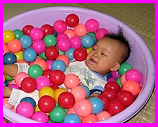 Students in grades 6 to 9 learn about biomedical engineering and the human sensory system, then follow the engineering design process to create sensory-integration toys for youngsters with developmental disabilities.
Students in grades 6 to 9 learn about biomedical engineering and the human sensory system, then follow the engineering design process to create sensory-integration toys for youngsters with developmental disabilities.
Read More
Filed under: Class Activities, Grades 6-8, Lesson Plans | Comments Off on Sensory Toys Make Sense!
Tags: adaptive technology, Biomedical Engineering, Class Activities, Engineering Design, Grades 6-8, Lesson Plan, sensory integration toys, special needs students, toy adaptation
Posted on November 14th, 2017 by Mary Lord
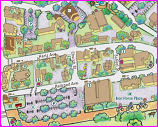 In this lesson on using mathematical modeling to solve real-world problems, middle and high school students work in teams to build a graph/model of their city map, then try to solve a real problem based on the model. They evaluate their solutions and present their reflections to the class.
In this lesson on using mathematical modeling to solve real-world problems, middle and high school students work in teams to build a graph/model of their city map, then try to solve a real problem based on the model. They evaluate their solutions and present their reflections to the class.
Read More
Filed under: Class Activities, Grades 6-8, Grades 9-12, Lesson Plans | Comments Off on Choose Your Best Way
Tags: algorithm, Class Activities, Computer Science, Euler, Grades 6-8, Grades 9-12, graph theory, Lesson Plan, mathematical modeling, Mathematics, network science, NGSS, programming, Seven Bridges of Konigsburg, traveling salesman problem
 Students in grades 9 and 10 are introduced to the biomechanical characteristics of helmets and challenged to incorporate them into helmet designs. They come to understand the role of engineering associated with safety products – in this case protecting the brain and neck of a bicyclist in the event of a crash, with the design dependent on the user’s needs and specifications.
Students in grades 9 and 10 are introduced to the biomechanical characteristics of helmets and challenged to incorporate them into helmet designs. They come to understand the role of engineering associated with safety products – in this case protecting the brain and neck of a bicyclist in the event of a crash, with the design dependent on the user’s needs and specifications.








 Clean a beach, create art, or help monitor marine debris as a citizen scientist. Check out these lesson plans and other resources for celebrating World Oceans Day June 8.
Clean a beach, create art, or help monitor marine debris as a citizen scientist. Check out these lesson plans and other resources for celebrating World Oceans Day June 8. Students in grades 6 to 8 explore food production problems related to population growth and then engineer a model vertical farm as a potential solution in a fictional community, Greentown, culminating with a presentation to the imaginary city’s “legislators.”
Students in grades 6 to 8 explore food production problems related to population growth and then engineer a model vertical farm as a potential solution in a fictional community, Greentown, culminating with a presentation to the imaginary city’s “legislators.”  Sensors are in everything from smart phones to corn fields. They also can be a powerful and engaging tool to teach STEM. SENSE IT, a free, research-based curriculum, involves students in hands-on learning about their local environment by constructing, deploying, and interpreting data from a network of water-quality sensors.
Sensors are in everything from smart phones to corn fields. They also can be a powerful and engaging tool to teach STEM. SENSE IT, a free, research-based curriculum, involves students in hands-on learning about their local environment by constructing, deploying, and interpreting data from a network of water-quality sensors.  Students learn about the Great Pacific garbage patch, research the extent and impact of plastics pollution on oceans, and present that information as a short, eye-catching newsletter suitable to hand out to fast-food restaurant customers.
Students learn about the Great Pacific garbage patch, research the extent and impact of plastics pollution on oceans, and present that information as a short, eye-catching newsletter suitable to hand out to fast-food restaurant customers.  Working in pairs, students in grades 6 to 8 follow the engineering design process to create the strongest truss bridge using a fixed amount of plastic drinking straws and tape. Let the competition begin!
Working in pairs, students in grades 6 to 8 follow the engineering design process to create the strongest truss bridge using a fixed amount of plastic drinking straws and tape. Let the competition begin!  High school students design and build wind chimes using their knowledge of physics and sound waves, and under such constraints as weight, cost, and the number of musical notes their chimes must generate. They make mathematical computations to determine the pipe lengths. Links to similar activities for younger students included in activity scaling section.
High school students design and build wind chimes using their knowledge of physics and sound waves, and under such constraints as weight, cost, and the number of musical notes their chimes must generate. They make mathematical computations to determine the pipe lengths. Links to similar activities for younger students included in activity scaling section. Students in grades 6 to 9 learn about biomedical engineering and the human sensory system, then follow the engineering design process to create sensory-integration toys for youngsters with developmental disabilities.
Students in grades 6 to 9 learn about biomedical engineering and the human sensory system, then follow the engineering design process to create sensory-integration toys for youngsters with developmental disabilities. In this lesson on using mathematical modeling to solve real-world problems, middle and high school students work in teams to build a graph/model of their city map, then try to solve a real problem based on the model. They evaluate their solutions and present their reflections to the class.
In this lesson on using mathematical modeling to solve real-world problems, middle and high school students work in teams to build a graph/model of their city map, then try to solve a real problem based on the model. They evaluate their solutions and present their reflections to the class.